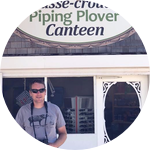About This Project
Freshwater sponges are the pinnacle of the weird and wonderful. As a basal animal that most people don’t even know exists, the freshwater sponges remain relatively understudied. The goal of this project is to survey, collect, and identify freshwater sponges within the Great Lakes region. Successful completion of the project will generate new occurrence records of at least 100 Michigan waterways. Our data will be compared the only other study of its kind conducted 87 years ago.
Ask the Scientists
Join The DiscussionWhat is the context of this research?
This project serves to fill a gap in our basic understanding of the freshwater sponge ecology of the Great Lakes region as well as providing an insight into the conservation merit and needs of this overlooked aquatic animal. The literature is filled with bits and pieces about freshwater sponge biology and ecology, but few large scale studies have ever been completed. The last survey took place almost 90 years ago, although its existence means Michigan is ahead of the game in sponge research.
Where do freshwater sponges occur in the Great Lakes region?
What is the significance of this project?
This project will update our understanding of the current distribution of Michigan's 12 previously identified species of freshwater sponges. It may also result in the identification of previously undocumented species or the disappearance of previously described species.
This project will also provide the foundational research base for future sponge projects to be carried out by our research group. These planned projects include comparative genomics and microanatomy of freshwater sponges.
What are the goals of the project?
Our primary goal is to collect sponge specimens from previously determined sites and identify what species the specimens are. In other words, resurvey the study sites of the last freshwater sponge survey in Michigan. This will allow us to not only elucidate current distribution patterns but to explore changes in distribution.
Budget
The budgeted items are required for successful completion of the field work. They included basic personal protective gear, sampling supplies, and a dinghy for working in deeper water systems.
Endorsed by
 Project Timeline
Project Timeline
The project will begin following the emergence of the freshwater sponges in the northern parts of Michigan. The field season will continue over the summer until the waterways start cooling off and the sponges begin to die back in. Lab identification to the species level will occur on an ad hoc basis during the field season. Following the conclusion of the field season, lab identification will be completed and the data analysed.
Apr 23, 2019
Project Launched
May 31, 2019
Start Field Work; collection of sponge specimens from aquatic ecosystems and later identification in the lab
Nov 01, 2019
End Field Work
Nov 19, 2019
Report results to survey's backers
Apr 13, 2020
Undergraduate Research Symposium - Oral Presentation
Meet the Team
Affiliates
Affiliates
Roger Willford
I am studying for a Bachelors in Fisheries and Wildlife Management with a wildlife concentration and a minor in Fire Science at Lake Superior State University. I am a member of the Lake Superior State University Track and Field team as a Decathlete and pole vaulter. I love animals and have many years of experience working with large domestic animals one may find on a farm. I enjoy spending time outdoors whether I am on land, in or on the water, and even when I'm working. And I am always on the lookout for other fun and exciting outdoor activities to try.
Stephen Kolomyjec
Dr. Stephen Kolomyjec is a zoologist and population geneticist. He has traveled the globe to pursue his research interests in mammalian biology, spending time in South Africa and Australia. His ongoing research includes extensive work on the population genetics and ecology of the platypus. He also leads student research projects in the fields lichenology and freshwater sponge biology.
Project Backers
- 20Backers
- 103%Funded
- $1,036Total Donations
- $51.80Average Donation



